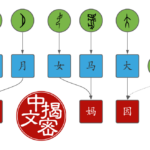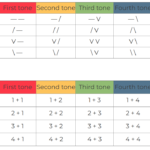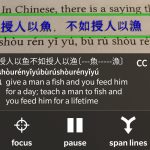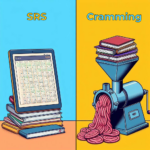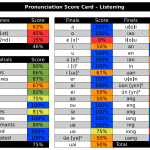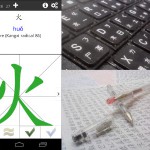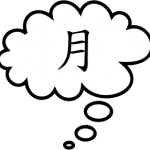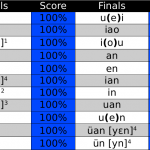Articles in the ‘Key study hacks’ category Page 2
-
The building blocks of Chinese, part 3: Compound characters
A vast majority of Chinese characters are compounds, and understanding how the components fit together and which function they have, will make learning and remembering characters a lot easier. This article explains the most important types of compounds you’ll encounter and how you can use that knowledge to learn characters more easily.
Read → -
A smart method to discover problems with Mandarin sounds and tones
It’s often hard to assess one’s own pronunciation when learning Mandarin. People around you might understand what you are saying, but that doesn’t necessarily mean your tones are good. Simply asking people if your pronunciation is good won’t work either, because they will often tell you that your pronunciation is good even if it’s not. So how can you find out how good your pronunciation really is?
Read → -
Diversify how you study Chinese to learn more
How is it possible to spend 80 hours a week learning Chinese? And what can you learn from that, even if you find it hard to find any time to study whatsoever, with work and family taking up most of your time? This article aims at widening the scope of what it means to learn Chinese, and shows you ways you can learn that you probably haven’t thought of before!
Read → -
How to look up Chinese characters you don’t know
Looking up an unknown character in Chinese is much trickier than looking up unknown words in most other languages. This article discusses various ways of looking up Chinese characters, including paper dictionaries, handwriting input, OCR and more.
Read → -
101 questions and answers about how to learn Chinese
This is the biggest collections of questions and answer about how to learn Chinese anywhere. The questions are sorted into categories, and each question is answered briefly before links to further information is provided. If you have a question about how to learn Chinese, you’re very likely to find the answer here! If your question hasn’t been answered, please consider leaving a comment!
Read → -
Cramming vs. spaced repetition: When to use which method to learn Chinese
Cramming and spaced repetition are viable but opposite methods of reviewing Chinese characters, words and expressions. When should you use which? And Why?
Read → -
Training and testing your ability to hear Mandarin sounds
Learning to hear the sounds in a new language is a very important step, both to understand it and to pronounce it yourself. This article gives you methods and tools for training and testing your ability to hear the sounds of Mandarin.
Read → -
A minimum-effort approach to writing Chinese characters by hand
Learning characters in the first place takes time, but you also need to maintain that knowledge. This article presents an efficient way to remember how to write Chinese characters in the long term.
Read → -
What you intend to write is more important than the character you actually write
Why is focusing on intent important when learning to write Chinese characters? What you intend to write is more important than what you actually write.
Read → -
Focus on initials and finals, not Pinyin spelling
Instead of worrying too much about Pinyin spelling and what sounds each letter represents, students of Mandarin should zoom out a bit and focus on initials and finals as whole units. There are only around 60 of them and focusing on them will pay off handsomely.
Read →
